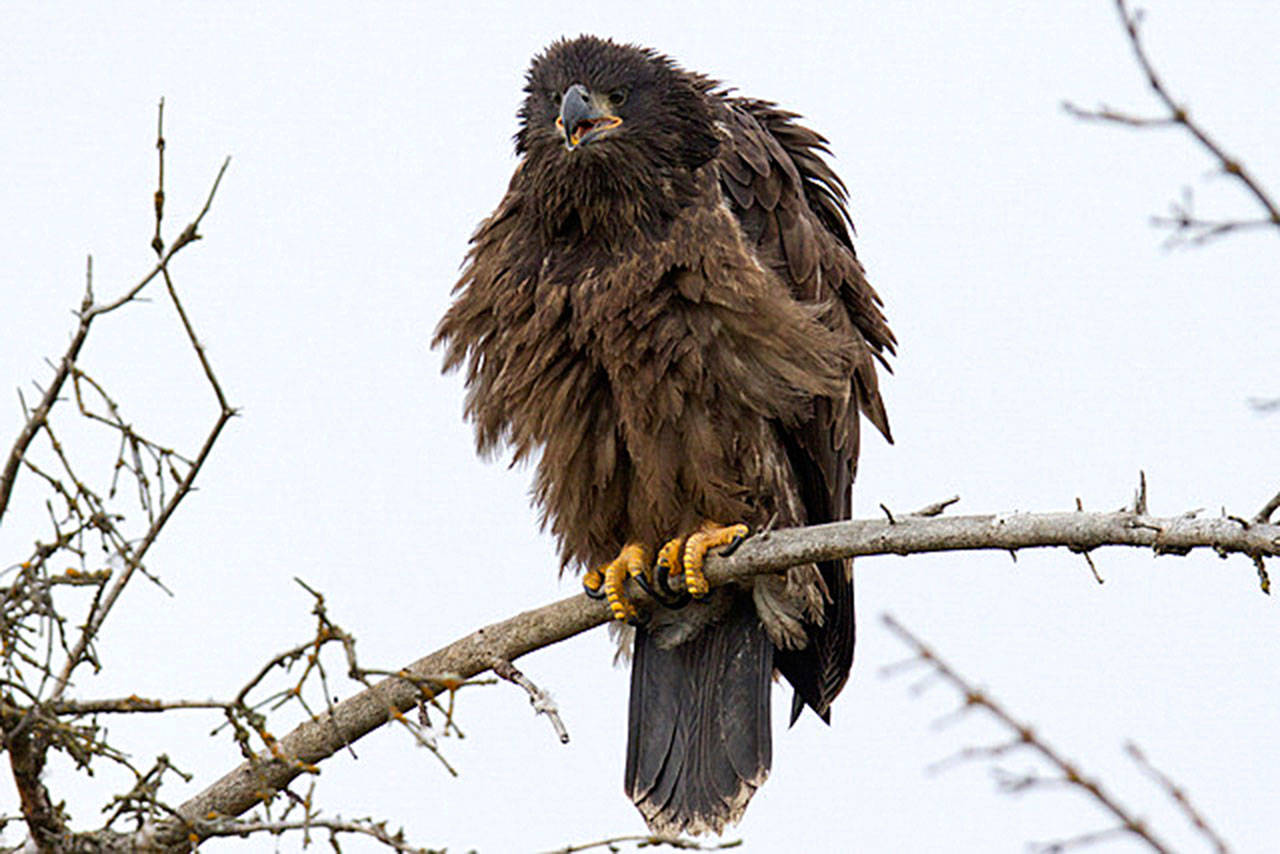It’s August in Sequim, and if you notice that the birds in your yard are not looking their best, you are not alone. Patchy colors, and a generally unkempt appearance are part of the normal annual cycle for a bird – replacing its feather coat (called its plumage).
This is termed molting, and is usually done by adult birds after the work of nesting and raising their young is finished. Some young birds, like Bald Eagles, take two or three years to molt into full adult plumage (see photos).
Molt can’t be haphazard, as loss of too many feathers may not maintain efficient flight. Look for missing wing and tail feathers, where feathers are lost symmetrically to maintain balance. If you see a bird flying with a wing feather missing, the same feather will be missing on the other wing. Waterfowl (ducks and geese) are the exception.
Because of their weight, they need all their feathers to fly, and so they molt all at once. They remain earthbound and cautious for about a month until their new feathers grow in.
To conceal themselves from predators during this period, male waterfowl replace their gaudy breeding plumage, looking like the more subdued plumage of females. This is referred to as eclipse plumage.
Feathers are what makes a bird a bird, right? Birds are the only living organisms with feathers, but discoveries of fossil dinosaurs surprisingly show some with feathers all over their bodies, including down, colored feathers, and wing and tail feathers.
Feathers evolved from simple beginnings in pre-avian dinosaurs over millions of years, although it is believed flight came well after primitive feathers evolved.
Feathers also serve for display, courtship, aggression and camouflage.
Modern birds have specialized feathers. Wing, tail and contour feathers have a branching structure, with Velcro-like hooks that interlock to create the smooth, windproof, flexible surface. Wing feathers are shaped aerodynamically like an airfoil. Tail feathers are more symmetric and fan shaped to provide precision steering.
Muscles and ligaments attached to the bones allow the bird to move the positions of its flight and tail feathers. Light weight is always important for flight, and the central shaft of these large feathers is hollow. Smaller fluffy air-trapping down feathers close to the skin are used for warmth with minimal weight.
When birds preen they are picking up oils from a gland at the base of the tail and using their bill to both realign the “Velcro” and oil the feathers to help them shed water. Cormorants have specialized wing feathers that are not waterproof. This makes it easier to dive but requires some drying of feathers to make them efficient fliers. If they are too wet, they can’t take off. In contrast, vultures spread their wings perpendicular to the sun in the early morning not to dry their feathers, but to warm up.
Eventually with continual exposure to wind, sunlight, water and surfaces, feathers weaken and break. The black color of flight feathers of many white waterfowl and other birds are thought to add strength to the feathers and slow the wear from constant stress of flying.
Feathers are made of keratin, a strong protein that is also found in mammal’s hair and nails, and reptile’s scales. The specific type of keratin in feathers is unique to birds though.
Feathers are crucial to birds and their importance can be seen in the elegance of design in each individual feather, and each feather type (down, flight, contour, etc.) as well as in their integration as a whole that forms an efficient “blanket” in which birds are wrapped.
Judith White is President of the Olympic Peninsula Audubon Society.



